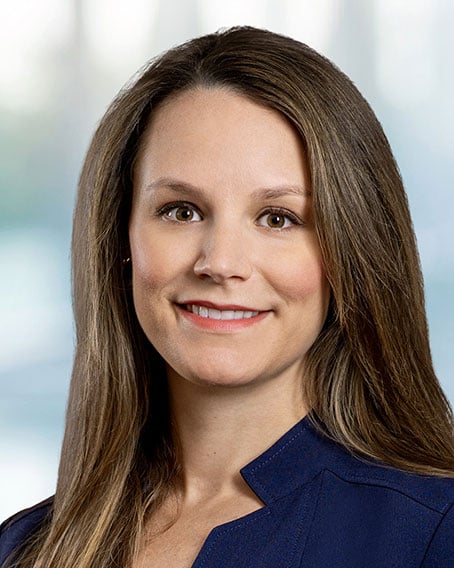The Task Force on Inequality-related Financial Disclosures – or TIFD – is developing a risk management framework that calls for financial disclosures on corporate and investor contributions to inequality. Inspired by the Task Force on Climate-related Financial Disclosures, the TIFD envisions a disclosure framework that will provide guidance, thresholds, targets and metrics for companies and investors to measure and manage their impacts on inequality and inequality-related risks. In this Alert, we provide an overview of the TIFD, its relationship to other instruments, standards and frameworks and next steps in the development of the TIFD framework.
An Overview of the TIFD Framework
The TIFD is premised on the concept that inequality is a systemic risk that negatively impacts the economy, markets and corporate profitability, and that the corporate sector has contributed to such inequality. According to the International Monetary Fund, socio-economic inequality is on the rise globally. Almost 90% of advanced economies around the world have seen an increase in income inequality over the past 30 years. Further, the financial impact of the Covid-19 pandemic was magnified by the lack of economic resilience for large segments of the global population, with inequality serving as a contributing factor to the intensity of the downturn.
The TIFD framework will provide targets, metrics and guidance for companies and investors to measure and manage their impacts on inequality in addition to the risk inequality presents to company and investor performance. Aspects within scope for the framework include the following:
- Vertical and horizontal inequality. The TIFD will address both vertical inequality (i.e., economic inequality among individuals or households) and horizontal inequality (i.e., inequality between culturally defined groups, such as by gender, race, ethnicity and ability), both within countries and between them.
- Impacts of company and investor practices. The TIFD will address the impacts of company and investor practices, such as taxing, investment structuring and supply chain purchasing, on marginalized and vulnerable communities.
- ESG investing and impact investing. The TIFD refers to “ESG investing” synonymously with responsible investment as defined by the Principles for Responsible Investment. PRI defines responsible investment as a strategy and practice to incorporate ESG factors into investment decisions and active ownership. For “impact investing,” the TIFD uses the Global Impact Investing Network definition: investments made with the intention to generate positive, measurable social and environmental impact alongside a financial return.
- Tax avoidance. Rent seeking activity, including tax avoidance and tax abuse by companies and investors, will be included in the framework. As framed by the TIFD, tax havens and tax incentives contribute to the depletion of financial resources that are critical to fulfill the basic economic needs and social rights of citizens. The Global Reporting Initiative’s tax disclosure standard will influence how the TIFD framework addresses this topic.
- Lobbying and political spending. As framed by the TIFD, companies contribute to inequality through lobbying and political spending efforts (i.e., when companies lobby against worker protections).
- Utilization of thresholds, targets and metrics. The TIFD’s approach to standard setting is to define targets and metrics that will capture the various ways in which the private sector can contribute to inequality, with the goal of reducing or eliminating them.
- Tools for achieving reductions in inequality. The TIFD will create tools to assist in reducing contributions to inequality, including tools akin to the TCFD’s prescription for scenario analysis. Concepts such as stress testing for policy responses, or inequality value at risk, will be taken under consideration in developing the framework.
- Geographic scope. The TIFD will create an international advisory board with leading regional experts to ensure the framework is regionally relevant, since inequality varies across geographies.
Alignment with Other Instruments, Standards and Frameworks
The TIFD plans to align with the goals, targets and responsibilities in other international instruments, standards and frameworks. These include the UN Guiding Principles on Business and Human Rights, the Global Reporting Initiative, World Benchmarking Alliance, Impact Management Project, Sustainability Accounting Standards Board, ISO 26000 and EU sustainability disclosure requirements.
The TIFD also believes its framework can contribute to UN Sustainable Development Goals related to inequality and human rights. The TIFD specifically notes SDG 10 (reduce inequality within and among countries) and the following indicators across other SDGs: 2.1.2 (prevalence of moderate or severe food insecurity in the population, based on the Food Insecurity Experience Scale), 3.8.2 (proportion of population with large household expenditures on health as a share of total household expenditure or income) and 5.5.2 (proportion of women in managerial positions). The TIFD framework also aims to align with SDG 17 (partnerships for the goals) and notes indicators 17.13 through 17.19, which relate to policy and institutional coherence, multi-stakeholder partnerships and data, monitoring and accountability.
While the TIFD seeks to align its framework with other existing disclosure and risk management frameworks, the TIFD also intends to introduce new features, including the following: (1) a focus on investment structures and practices that contribute to inequality; (2) targets that companies and investors can work toward to alleviate inequality, metrics to gauge their progress and thresholds to ensure that the metrics stay within planetary boundaries and respect human rights; and (3) an explicit role for representatives of the most vulnerable individuals and communities as co-creators.
TIFD Status and Next Steps
The TIFD FAQ Beta Version was released in February 2021. The FAQ Beta Version, which was informed by ongoing stakeholder engagement related to inequality, outlined the vision for the TIFD framework. In July 2022, the TIFD FAQ was revised to include the TIFD architecture and process for developing a conceptual framework.
Beginning in 2023, the TIFD will convene thematic working groups from a diverse coalition of stakeholders to synthesize empirical evidence regarding the root causes of inequality with existing corporate and investor disclosure and risk management frameworks, fill gaps and draw upon that work to define metrics, targets and thresholds. Draft disclosures will then be made available for public comment. The TIFD’s goal is to launch the framework in 2025.
The TIFD is currently seeking additional stakeholders to join to co-create the framework. Currently, there are approximately 50 “Allies” of the TIFD, comprising civil society groups, investors, businesses, financial services firms, academics and governmental organizations.
About Our Practice
Ropes & Gray has a leading ESG, CSR and business and human rights compliance practice. We offer clients a comprehensive approach in these subject areas through a global team with members in the United States, Europe and Asia. In addition, senior members of the practice have advised on these matters for more than 30 years, enabling us to provide a long-term perspective that few firms can match.
For further information on the practice, click here.
Authors
Stay Up To Date with Ropes & Gray
Ropes & Gray attorneys provide timely analysis on legal developments, court decisions and changes in legislation and regulations.
Stay in the loop with all things Ropes & Gray, and find out more about our people, culture, initiatives and everything that’s happening.
We regularly notify our clients and contacts of significant legal developments, news, webinars and teleconferences that affect their industries.



